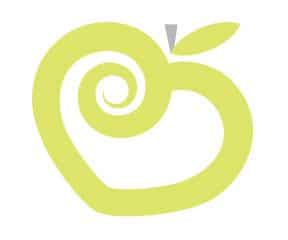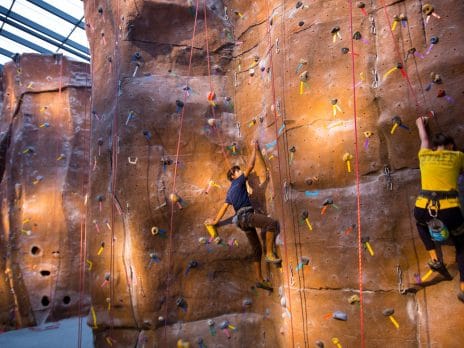Contact Health Promotion
Health Promotion
Nutrition & Fitness
Nutrition Basics
Building a balanced plate Accordion Closed
- Fruits and vegetables can keep us feeling healthy and happy. Aim for 5 servings per day, eat a variety of colors, and choose seasonal produce at the store.
-
- Find simple ways to increase your fruit and vegetable intake in little amounts throughout the day, such as pre-chopping your fruits and vegetables when you first get home from the store, throwing your favorite vegetables into eggs at breakfast time, grabbing whole fruits for a quick snack, and stocking up on frozen vegetables for a quick side dish with dinner.
- Whole grains provide energy, fiber, protein, and essential oils. Try to make at least 50% of your grains when eating bread, rice, or pasta-or try an ancient grain such as quinoa or amaranth.
- Protein is essential for building muscle and tissue, promoting healing, increasing our immune system, and providing long-lasting energy. Limit processed meats (bacon, sausage) and red meats to 1-2 servings per week, but include a variety of other protein sources during the week. Eggs, low-fat dairy, chicken, fish, and turkey are all lean, heart healthy meat sources. Don’t forget to include tofu/soy, beans, nuts, and seeds for plant based alternatives.
- Healthy fats are a vital piece of keeping us full, supporting brain function, and reducing inflammation. Choose unsaturated fats as your primary sources of fat, grabbing nuts, seeds, avocado, oils, and oily fish (salmon, mackerel) to reduce your risk of heart disease later in life.
Meals and snacks Accordion Closed
Eating meals and snacks throughout the day provides a steady supply of nutrients and energy for your body and your mind. Try to include a source of protein and fiber with your meals and snacks to make your energy last longer. Quick breakfast and snack ideas include:
- Fresh, whole fruit, such as apples or oranges with a small handful of nuts
- Apple, banana, or celery with nut butter or sun butter
- Nuts and seeds mixed with a handful of dried fruit and 1 oz. of dark chocolate
- Baby carrots, sugar snap peas, or mini bell peppers with hummus
- Low-fat string cheese and a serving of whole grain crackers
- Fresh or dried edamame
- Greek yogurt and fruit
Water & hydration Accordion Closed
The Flagstaff mountain campus is located at 7,000 feet above sea level-meaning the air is dryer and we’re more likely to lose water through increased breathing! It’s common for students to feel headaches, fatigue, and decreased exercise performance when first moving to Flagstaff. Be sure to carry water with you at all times. Adding things like fresh fruit, lemon juice, and ice can make it easier to stay hydrated.
Eating on a budget Accordion Closed
There are lots of strategies and resources for eating healthy on a budget. This website has more information on local food resources, SNAP (formerly food stamps) benefits, recipes, and ways to eat healthy on a budget.
Eating in the Outdoors Accordion Closed
Click here for a video demonstration about eating in the outdoors!
Download our Outdoor Cookbook here
Eating on campus
Eating healthy with a meal plan doesn’t have to be complicated. Follow the strategies below to choose healthier options on campus!
Choosing healthier transfer options Accordion Closed
- Ask for whole wheat bread, buns, rice and tortillas.
- Choose fresh fruit as your transfer side instead of chips. (Hint: you can also ask for fresh vegetables as a side at the Coupe and the Green Scene)
- Order extra vegetables with your salads, smoothies, soups, and burritos.
- Opt for lean or vegetarian protein sources, such as roasted/grilled chicken, turkey, tuna, or beans.
- Drink water, unsweetened tea, fruit infused water, or low-fat milk with your meals.
- Ask for dressings and sauces on the side with sandwiches and salads.
- Choose toppings that are low in saturated fat, such as vinaigrettes, mustard, and guacamole.
- Limit how often you go to places that offer mostly fried foods to 1-2 times per week.
- Using the NAU Go App to find the nutrient content of foods, allergen info, and vegan/vegetarian options.
Healthy options in the Hot Spot and the DuB Accordion Closed
There are plenty of healthy options available, just remember:
- Set a goal to make at least half of your plate full of vegetables.
- Go for whole grains: ask for whole grain/whole wheat bread, buns, whole wheat tortillas, and rice.
- Check out the Superfoods Bar for fresh salads made with vegetables, ancient grains, dried fruit, and legumes. Homemade hummus and fresh greens are also available daily at the Superfoods bar.
- Grab a plate from Simple Servings to have fresh, simply seasoned meals featuring a protein and sides (hint-look for the purple plates!). This station is also friendly for people with food allergies and celiac disease.
- Mix and match from different stations to customize your meals and increase variety.

Food allergies and special dietary needs Accordion Closed
Do you have a food allergy or other special dining need? Campus Dining has you covered:
- Menus within the Hot Spot and the DuB are labeled to identify milk, eggs, wheat, gluten, soybeans, fish, shellfish, peanuts, and tree nuts.
- Simple Servings is a platform within these locations featuring menus that avoid most of these allergens (occasionally, fin fish such as tilapia or salmon are offered).
- Many items across campus are easily modifiable to become gluten free, vegetarian, or dairy free-just ask!
- The Wedge and Eat Market both have several snack and meal items that are gluten free and dairy free. Dining Dollars can be used on these items.
There are several steps that you can take to stay safe on campus with food allergies:
- If you have a life threatening allergy, carry your EpiPen with you at all times.
- Inform your friends and/or roommates of your allergies and symptoms, as well as what to do in case of a reaction.
- If you have a reaction that takes place in the dining hall, alert a staff member or have a friend alert a staff member to call for medical assistance.
- Introduce yourself to the managers and chefs! All managers are AllerTrain certified and happy to help you find options on campus.
- Contact the NAU Registered Dietitian for a free dining tour to help identify options on campus.
- Alert your servers to your allergy and ask them to change their gloves and use clean cutting boards, utensils, and pans for your food items.
- Ask a manager to review a food label or recipe if you have any concerns about an item.
- Report any allergic reactions to a Campus Dining Manager.
Fitness
Why exercise? Accordion Closed
There are plenty of reasons to stay active every day:
- Lower stress and anxiety
- Reduce muscular tension
- Improve academic performance
- Enhance self-esteem
- Improve sleep at night
- Increase resistance against disease, such as the common cold
- Decrease or manage blood sugar levels
- Increase the production of endorphins, which are brain chemicals that can make you happy
If you’re feeling overwhelmed, start small! Even small breaks throughout the day to walk or stretch have benefits for health and wellness.
General recommendations Accordion Closed
Try to stay active every day! Ready to challenge yourself? Aim for:
- 150 minutes of moderate intensity physical activity (such as brisk walks or tennis) per week. This is only 20 minutes per day-the amount it takes to walk from South to North Campus
- 75 minutes of vigorous intensity physical activity (such as running or biking) per week. This is only 10 minutes per day.
- Any combination of moderate and vigorous intensity physical aerobic activity.
- Don’t forget to throw in some strength training! Lift weights, use resistance bands, or choose exercises that use your body weight at least twice each week. Be sure to target all of your major muscle groups for maximum benefits.

Where to workout Accordion Closed
On campus:
- Check out the Recreation Center, located in the HLC. Campus Rec is free for students and features:
- A full gym with free weights and machines, a rock-climbing wall, running track, and racquetball courts, as well free equipment you can check out, such as basketballs.
- Group Fitness classes that include everything from Zumba to Yoga to TRX. No registration needed-just show up when you can
- Enroll in a FIT 100 class and choose between for-credit or non-credit fitness courses offered through the Department of Health Sciences.
- Go swimming at the Aquatic Center
- Join a sports club or intramural team if you are looking for a team atmosphere.
- Explore beautiful Northern Arizona with NAU Outdoor Adventures. Students can register for outdoor adventure trips and rent low cost outdoors equipment such as camping gear and snow shoes.
- Cruise through campus on a Yellow Bike – available free to all students on campus.
- Take a walk through campus on one of the Bites & Hikes trails.
In the community:
Flagstaff and its surrounding areas offer a variety of other sports and fun ways to stay active:
- Check out one of the many martial arts studios in Flagstaff.
- Go Ice-skating at Thee Jay Lively Activity Center
- Go Dancing! Check out the calendar at Flagstaff Dance for fun and varied dancing events around town almost every night of the week!
- Flagstaff offers beautiful scenery for all sorts of outdoor activities, so you can have fun hiking, trail running, mountain biking, or exploring. Don’t know where to start? Check out the Flagstaff Urban Trails system.

